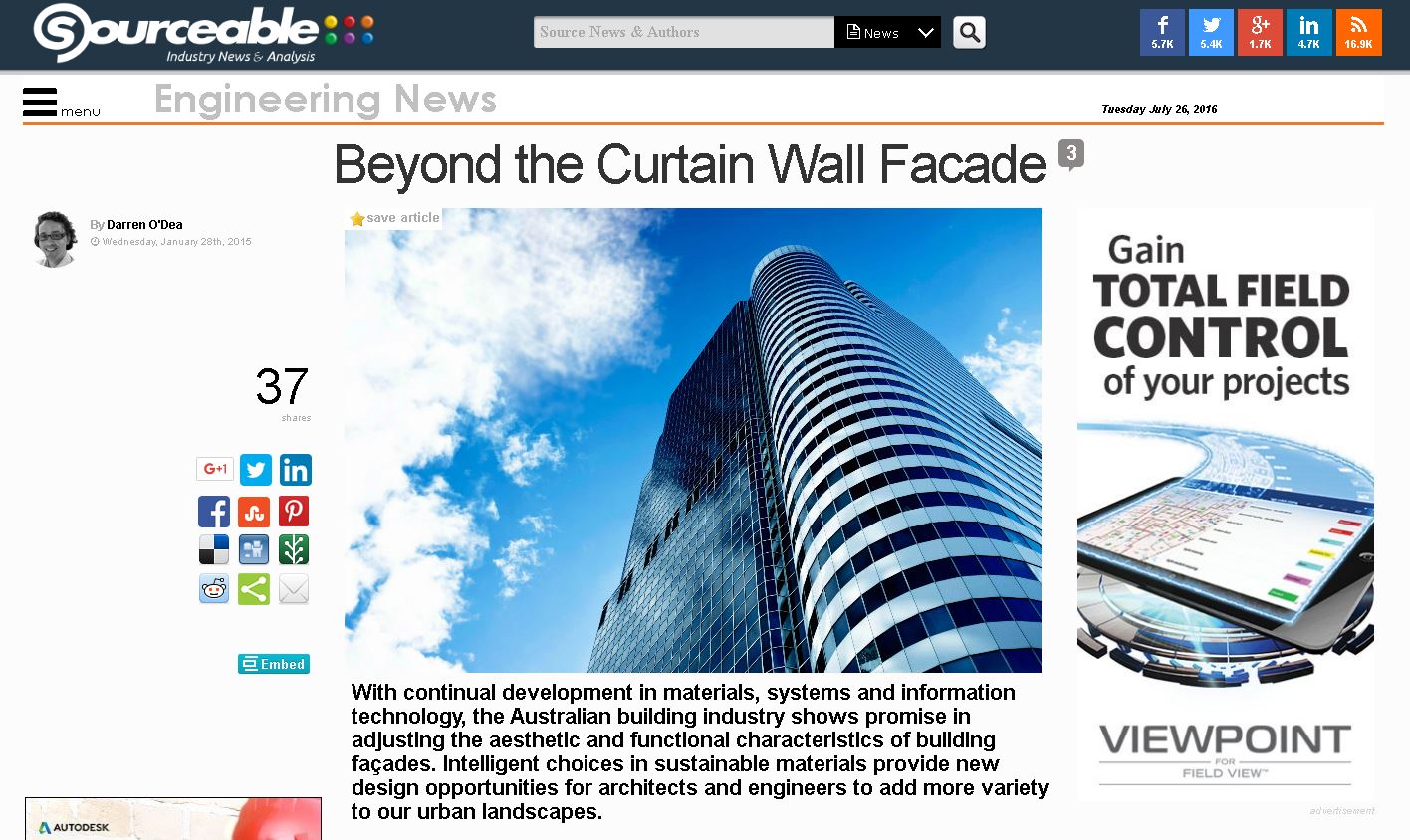Sourceable: Beyond the Curtain Wall Façade
Darren O’Dea, Inhabit’s Building Physics (ESD) lead, was recently invited to discuss with Sourceable http://www.sourceable.net, the challenges facing façade design from a building physics perspective.
Sourceable: Beyond the Curtain Wall Façade
With continual development in materials, systems and information technology, the Australian building industry shows promise in adjusting the aesthetic and functional characteristics of building façades. Intelligent choices in sustainable materials provide new design opportunities for architects and engineers to add more variety to our urban landscapes.
However, a stroll through any of Australia’s major cities reveals the increasing dominance of one type of façade, the curtain wall system, indicating the potential need for more innovative solutions to creative façade design.
In a recent Global Cleantech Innovation Index, Australia is labelled as laggards of innovation. While this might be a little too general a statement across all industry sectors, I would hesitate to argue that the numerous benefits of better curtain wall design are yet to be fully exploited.
With value engineering being introduced as early as the concept design stage, it is no wonder we struggle to add innovative technologies to our designs.
To be clear, curtain walls are fantastic option and a mainstay of the building industry. The rationale behind this is simple – they represent good value for money, a short production time, reduced labour costs and are extremely flexible from a design, health and performance perspective.
However, I have to wonder whether we are at risk of creating a homogenous urban landscape that lacks the creativity and depth that it could have, when considered against alternative or more advanced façade design options.
The good news is that we are now in the eye of the storm for innovation. With renewed federal support for innovation and today’s ‘sticks’ (NCC – Section J, NatHERS, BASIX) and ‘carrots’ (Green Star, LEED, NABERS, etc) more diverse than ever, Australia is conversely renowned as one of the most advanced construction markets globally.
So, while lagging behind from an innovation perspective, our legislative framework and best practice tools provide us with one of the greatest opportunities for façade based Innovation outputs.
Recent developments in façade technology are effective from the micro to macro levels, and are often only small considerations in a façade budget.
Standing the best opportunity of integration are the small-scale technologies that allow improved performance at the micro level. These include coatings, films, advanced materials and production processes. Always more of a challenge are larger scale innovations. While they require early buy in, double-skin, electrochromatic or kinetic façades will offer vast improvements in localised comfort and performance.
These emerging technologies offer radical changes to the built environment in terms of energy use, thermal behaviour, performance and aesthetics, changing the way in which buildings are designed and operated. By using intelligent materials, sustainable façades and building operations, designers will positively affect the way we live and move away from the default industry façade systems.
So the next time you are considering the visual appeal, build-ability and value for money of an early façade design, “push the envelope” a little bit further and consider how newer philosophies and technologies can provide lasting and creative benefits for occupants, the public and the urban environment of your city!
The above is reproduced from the Sourceable website.
Full article here: http://sourceable.net/beyond-the-curtain-wall-facade/
Date: 28th January 2015
Author: Darren O’Dea, Inhabit
